The dirty secret of power plants

Every time we turn on a light, crank up the air conditioning or wash our clothes, we are using electricity from the grid. But few of us ever stop and ponder the origins of our electricity. Do you know anyone that has actually been to a coal, natural gas, or nuclear power plant? Have you? Probably not.
The reason is simple. Power plants are built far from where people live. This is on purpose.
Power plants can be smelly, noisy, polluting, and dangerous. The mines and wells where fuel gets dug up can be even worse. If people lived near these plants or mines, they’d be a lot less ambivalent about their electricity. But, for most of us, it’s “out of sight, out of mind.”
So, here’s the big question
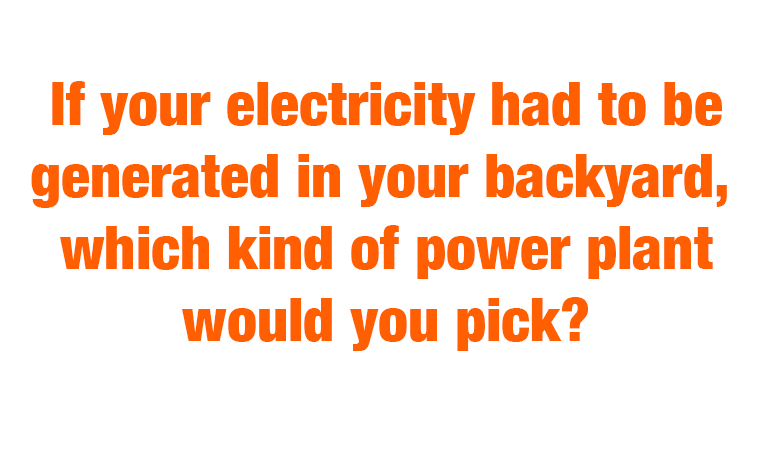
What about a coal plant?
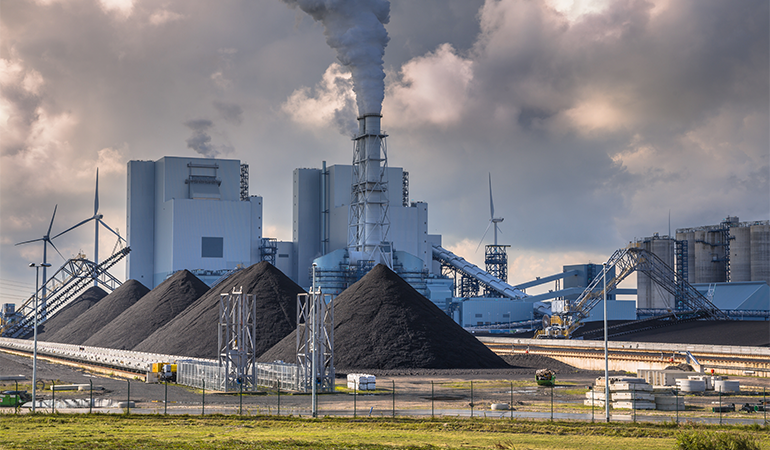
Coal provides about 30% of US electricity. This is down from 42% in 1990. Coal is burned to create steam which drives turbines that create electricity. Once burnt, coal leaves behind an ash that is laced with arsenic, mercury, and lead. Coal ash is the second largest industrial waste product in the US and it is largely unregulated. The waste ash is dumped in ponds near the plants. There are over 1,400 ash ponds in the US. Most people never see ash ponds, at least not until they break and spill millions of gallons of waste into local communities. More recently, a government-mandated testing survey found groundwater contamination at more than 70 ash ponds across the country.
What about a nuclear plant?
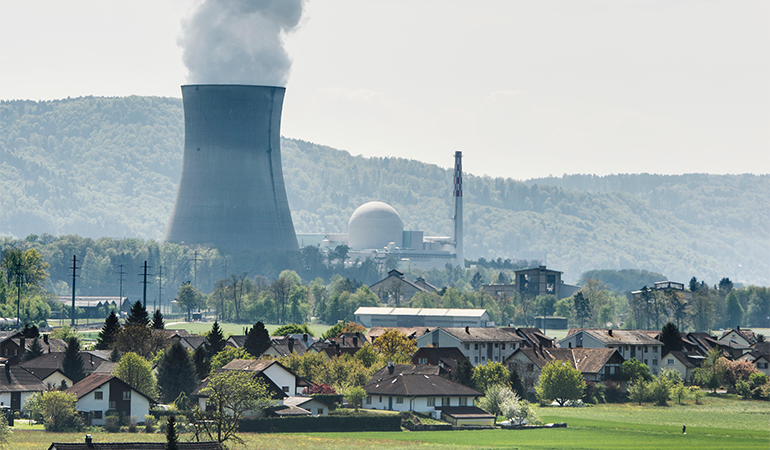
Nuclear power plants provide 20% of US electricity. No new plants have been built in 30 years so this number has remained steady. Nuclear fuel like Uranium is allowed to heat up and create steam, which in turn drives turbines to create electricity. Nuclear power plants produce no greenhouse gases. Even including accidents like Fukushima, nuclear power plants have led to fewer direct deaths than any other kind of power plant.
GET MONTHLY NEWS & ANALYSIS
Unsubscribe anytime. We will never sell your email or spam you.
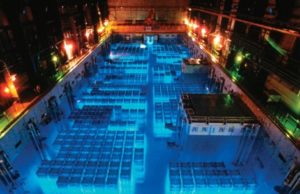 There is just one hitch. Nuclear waste. This is the highly radioactive stuff that is leftover after electricity has been generated. Like most countries in the world, US politicians are stalemated on how to store radioactive waste. So, for decades, power plants just dump their waste in pools next to the reactors. As the waste builds up, plants shove the spent fuel closer together, sometimes approaching the density used inside the reactor cores. An accident or terrorist act could break down the shielding in the pools which could lead to the same kind of meltdown that can occur in reactors. There is nearly 100,000 tons of nuclear waste stored at nuclear power plants across the US.
There is just one hitch. Nuclear waste. This is the highly radioactive stuff that is leftover after electricity has been generated. Like most countries in the world, US politicians are stalemated on how to store radioactive waste. So, for decades, power plants just dump their waste in pools next to the reactors. As the waste builds up, plants shove the spent fuel closer together, sometimes approaching the density used inside the reactor cores. An accident or terrorist act could break down the shielding in the pools which could lead to the same kind of meltdown that can occur in reactors. There is nearly 100,000 tons of nuclear waste stored at nuclear power plants across the US.
What about solar?
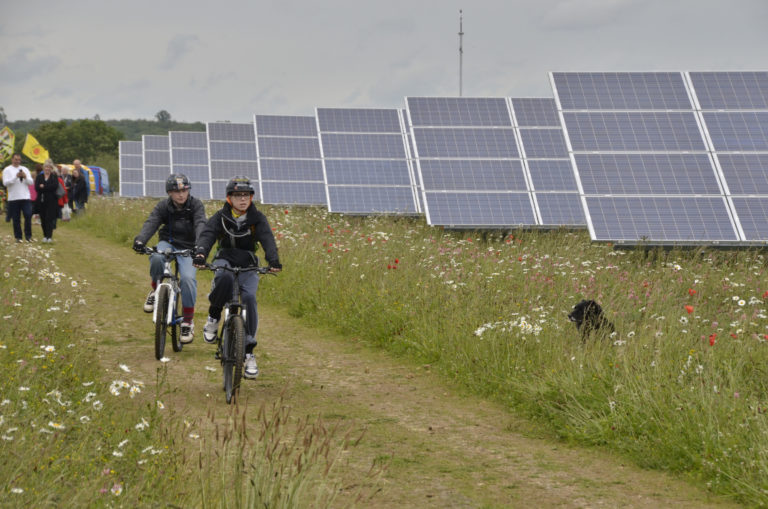
If you had to have a power plant in your backyard, solar isn’t a bad choice. Solar only provides about 2% of US electricity but it is the fastest growing. It makes no noise, emits no pollution or greenhouse gases, and produces no waste. It just sits there for decades, requires no fuel besides sunlight, and directly generates electricity. In fact, it’s so easy and safe that millions of people have put it on their roofs (imagine trying that with a coal or nuclear plant).
Solar has its challenges, of course. It doesn’t work at night. Clouds and rainstorms make its power output unpredictable. But it’s promise is so strong that solutions are being invented every day to get around its shortcomings.
The Freeing Energy Perspective
Fortunately, coal pollution is slowly receding as plants are taken offline and replaced with less polluting natural gas. Nuclear waste is highly regulated and vast sums of money are spent to keep it safe. For the most part, we can go about our day to day lives without dealing with the direct impact of these unseen power plants.
But, this really misses the point. Even if we can’t see ash ponds or spent nuclear fuel, they are all around us – in many cases, only a few dozen miles away. We need to shake off the ambivalence of “out of sight, out of mind” that has allowed us to look the other way for a hundred years.
For the first time in energy history, we have alternatives. Energy from the sun and wind is not only commercially viable, it is increasingly less expensive. Let’s quit asking ourselves if we can live with these legacy sources of power and ask ourselves why we should.
Note: Coal, nuclear, and solar are just a few of the ways to generate electricity. In future articles, we will look at wind, geothermal, natural gas and many others.

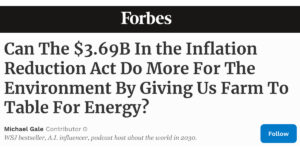

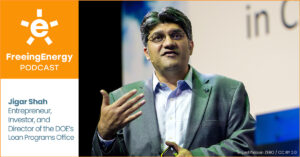
6 Responses
Bill – your emerging to provide a critical voice in the energy transition, keep it up!
Thank you, sir
Its incorrect that nuclear waste is a problem – nuclear waste has never hurt anybody in its history, and nuclear waste is the only hazardous waste stream we manage properly. Rather than some kind of incipient disaster waiting to happen – spent fuel is a resource. It can be reused 30 times over, and there are plants in Russia, France and Japan that reprocess spent fuel.
To say that NPPs are vulnerable to terrorist attack is fearmongering – NPPs are not highly vulnerable to terrorist attack, there are one of the most secure points in energy infrastructure (there is an excessive, unwarranted, and inordinate attention to security) Hydro dams, gas storage and many other points are far more vulnerable
How we reuse spent fuel, the security around it, and other questions, you can find in “After Fukushima: What We Now Know”, which gives these answers in detail.
I really appreciate you sharing your thoughts and feedback. Your book had already been highly recommended to me and I look forward to reading it shortly. A friend of mine calls nuclear power the “GMO of energy” – something that has great promise but gets mired in public concern. I look forward to reading your book and getting more educated on mitigating the perceived risks of nuclear.
Thanks for your reply!
I’ve never heard that term before “GMO of energy”, but I think I can imagine what they are driving at:
A technology that has suffered from drawbacks that were perceived to exist that never actually materialized.
What you wrote about spent fuel strikes to the heart of the fear that surrounds nuclear – that there is somehow a potential incipient disaster embedded in the technology. I think the history of nuclear power shows that neither meltdowns, nor waste are of great concern, but instead reduce risks in the energy sector & also reduce our problems with hazardous waste. Spent fuel allows us to avoid larger volumes of hazardous waste that are produced from cadmium in solar panels or the varied cocktail we find in coal waste.
While there are many legitimate environmental concerns for solar, I believe Cadmium is only used in thin film cells which represent less than 10% of the solar market (most solar uses silicon).